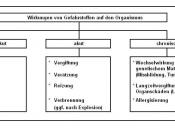Occupational Safety and Health Act (OSHA)Over the years, many states as well as the Federal government have attempted to enact legislation to protect employee physical well-being on the job without much success. State laws governed factory inspections, machine guarding and provided limited provisions for health hazards, but many hazards were left uncontrolled. The end of a tedious political battle to enact government regulation of workplace hazards was marked by the signing into law the Occupational Safety and Health Act (OSHA) in December 29, 1970.
The Occupational Safety and Health Act or OSHA states the following: "each employer shall furnish to each of his employees employment and a place of employment which are free from recognized hazards that are causing or are likely to cause death or serious physical harm to its employees. Each employer shall comply with the occupational safety and health standards promulgated under this act." (www.osha.gov).
Highly publicized accidents in the steel and mining industries shocked the nation and led to the creation of the US Steel Committee in 1908 as well as the US Bureau of Mines in 1910.
The US Steel Safety Committee's goal was to reduce the accident rates as much as possible. The committee was a safety first and its success caused it to spill over into other industries and led to the creation of the National Safety Council in 1915 (www.osha.gov). In 1913, Congress created the Department of Labor and its primary purposes were to improve working conditions in the nation and make unhealthy occupations healthy. Congress called on the Labor Department to report on industrial diseases and accidents (www.osha.gov).
The threat to employee safety continued to grow into the 1950's and 60's and the Federal government began to take a more active role. The Walsh-Healey Act originally adopted in 1936, was amended...


